This spring has been an exciting one for many reasons, but most recently because I found some morel mushrooms! This elusive mushroom is prized for it’s tastiness, and can only be wildcrafted as no one has figured out how to grow them (yet). They come up in spring to early summer, depending on where you live, and are fairly widespread. Foraging for morel mushrooms can be difficult, as they usually blend in very well with their surroundings. But, once you get an eye for them, they seem to pop up everywhere!
Wildcrafting Weeds
If you want to learn more about the edible and medicinal weeds that surround us and how to use them, check out my eBook: Wildcrafting Weeds: 20 Easy to Forage Edible and Medicinal Plants (that might be growing in your backyard)!
Gather & Root Online Foraging Course
My online foraging course is a great way to learn about wild edible and medicinal plants! Sign up to join the waiting list for the gather + root online foraging course here so that you are the first to know when it opens for enrollment.
 Foraging for Morel Mushrooms
Foraging for Morel Mushrooms
Morel mushrooms typically start coming up in the springtime, once daytime temps are in the 60’s and nighttime temps are in the 40’s (or higher), and after a few good rains. This can mean early March in warmer areas (like California), or as late as June in higher elevations or northernmost areas. Here in Southern Oregon, people have been finding them for the past several weeks, so I would say they probably started popping up around mid March.
They like south facing hillsides, and will typically be in the sunniest patches, where the ground is warmest. They generally grow around the drip line of trees, and while they seem to prefer certain varieties of trees (ash, aspen, sycamore, oak, elm), there are no hard and fast rules on this. They also like disturbed forests and burned areas. The place where I went searching was on BLM land with many prescribed burn areas like this.
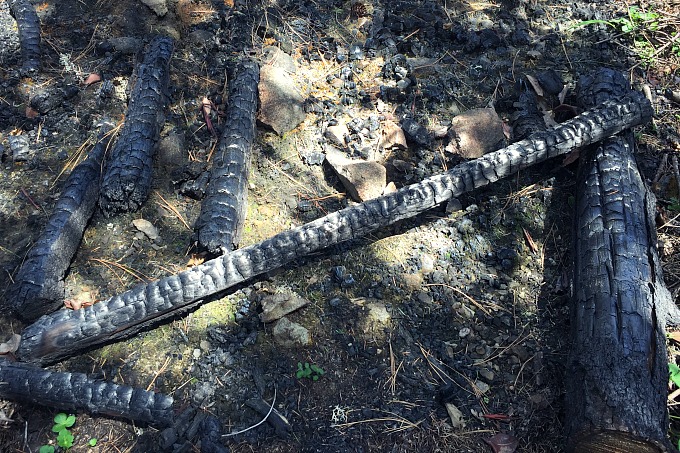
Morel Mushroom Identification
Morels are one of the easiest mushrooms to identify. They have a pitted and deeply ridged cap that resembles a honeycomb. The cap is also completely attached to the stalk, and they are completely hollow when cut in half.
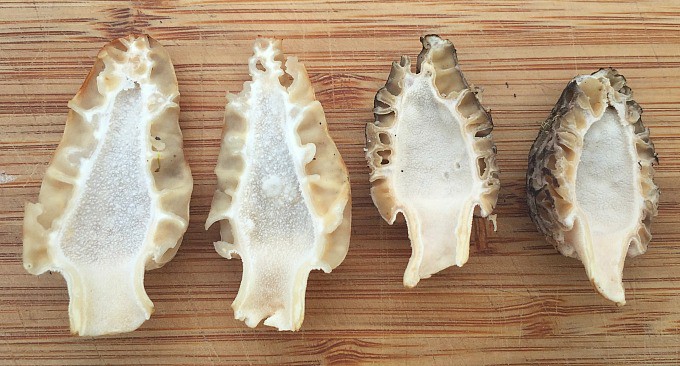
One other distinguishing characteristic is that they are almost always longer than they are wide. Many of the false morels are wider and more squat.
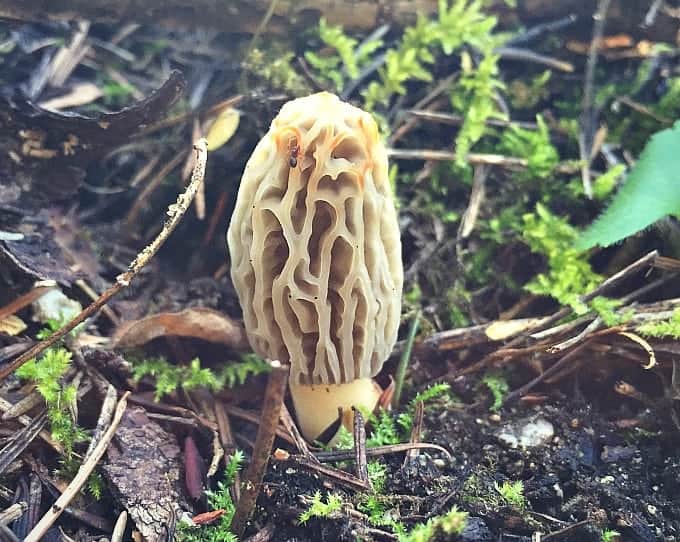
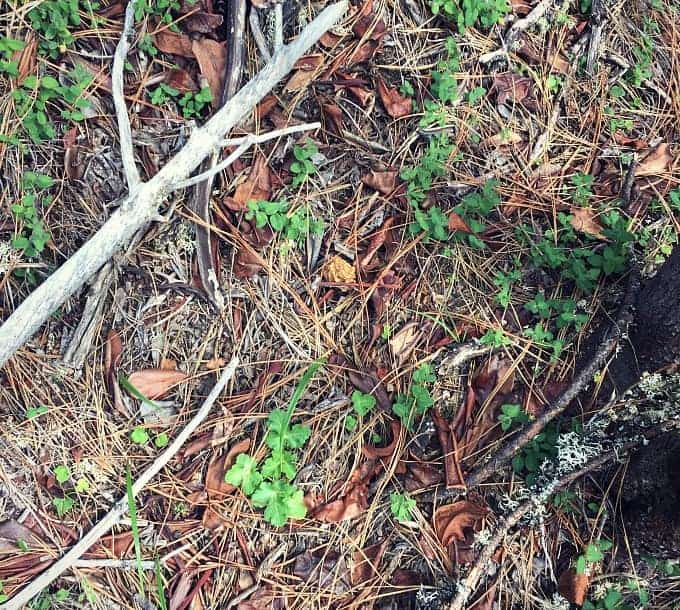
Mushroom Foraging Guides
- Chanterelles
- Yellowfoot Chanterelles
- Oyster Mushrooms
- Chaga
- 5 Easy to Identify Mushrooms
- 6 Medicinal Mushrooms for your Health
There are many different species of morels, but the most common (at least where I’m at) are the yellow and the black. Black morels tend to grow really close to burned areas, sometimes coming right out of the ashes. We found both types on this most recent hunt.

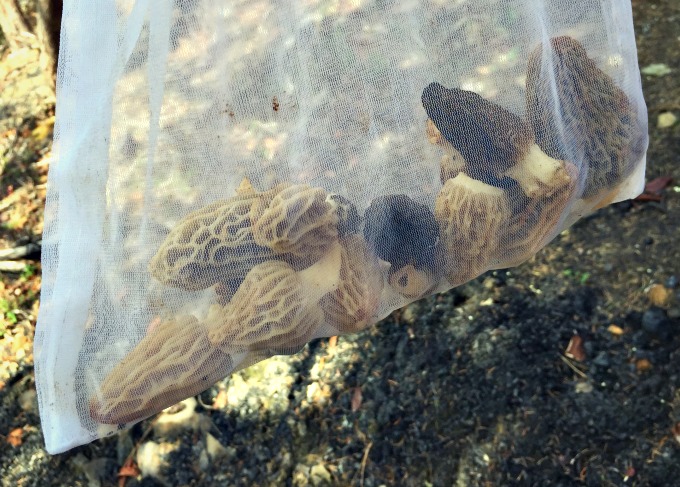
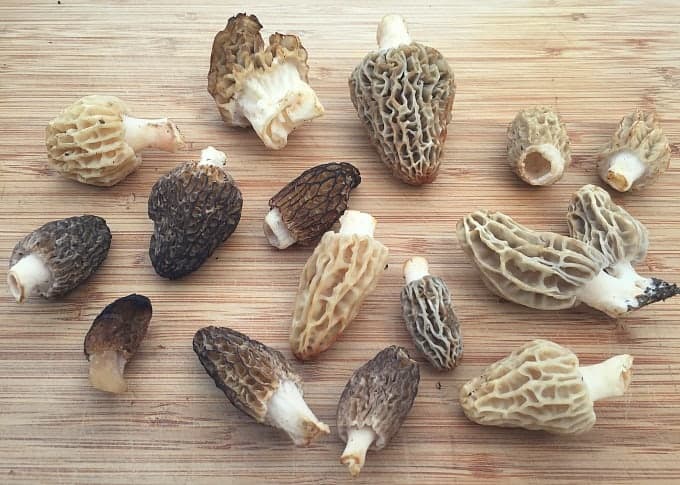
Here are a couple of great resources on morel mushrooms that I’ve found for further reading:
- How to Find and Identify Morel Mushrooms from Wild Foodism
- Foraging Morel Mushrooms: How to Find, Identify, Preserve, and Cook Morel Mushrooms from Vermont Mango Plantation
- Tips for Drying/Dehydrating Wild Mushrooms from Forager Chef
One last thought to keep in mind is always leave some mushrooms behind. Never take all of them, to keep the cycle of life going. Happy mushroom hunting!

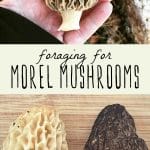

 Foraging for Morel Mushrooms
Foraging for Morel Mushrooms
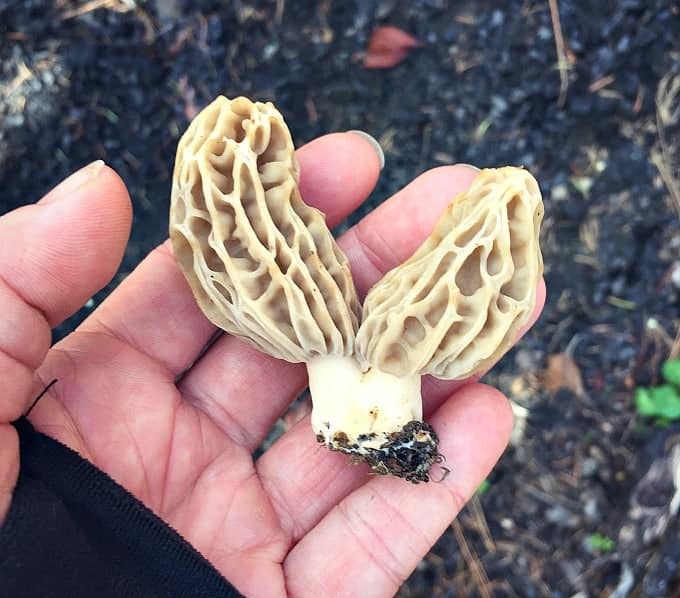

Just yesterday went foraging on our farm we found some morels in a spot we found them last year. They are difficult to spot if you don’t know what they look like. I have a question though since we found some that are light to dark is there a difference in taste between the colors?
Thanks
Hi Sharon. I find that they all taste fairly similar regardless of the color. The darker ones can be a bit more robust in flavor though.
Hi Colleen,
Great information and pictures, Thank you so much for sharing your knowledge. I haven’t foraged mushrooms since I was young with my dad. I plan on trying it again,
Thank you again,
Laurie
What density do morels have? I think I have found some – first time, but not sure if it is really morel. The ones I found are under a big tree, but they are very firm almost hard. Never foraged before so I don’t want to make a mistake.
Morels are hollow, so not very dense at all. Cut the ones you have in half to see if they are hollow.
I too love the morels, Not enough woods here in Central CA to forge… :( My dad and I took a class 45 yrs ago, we would
go “hunting” for the morels and our best bet was under Cottonwood trees. We were in WA State then so it was easy to
find a grove. These guys are delicious in stew, you can even use them as meat replacement.
Thanks for the memories and can’t wait to hear the recipe!
We fry them like fish, amazing.
My son and I hunted for Morels in the Caribou last spring in a burned area. There were lots of pickers as the growth followed a previous year- forest fire. I froze mine in June and had Oyster Bisque with morels for part of Christmas eve dinner….delicious! I just cleaned,blanched and froze them removing the air and they were great. I have found letting them dry out a bit is good as well it seems to give them more flavor.
Great article! I grew up in Indiana and used to hunt for Morels with my dad. Dad knew of places to find them, but guarded the locations from others finding them. One day my car broke down and I had to walk a ways to find a phone and then walk back to wait for someone to rescue me. While waiting there was a small woods between the road and a corn field which I decided to investigate. To my surprise the woods were loaded with them. I didn’t collect them then, but did return that evening and collected three large brown paper bags full. I never did tell anyone, to include my dad, where I was finding them because it was such a rich find. (I also sold them) One spring several years later I went to see what I could find and discovered the whole wood was bulldozed to make way for a new housing development. Nice memories…